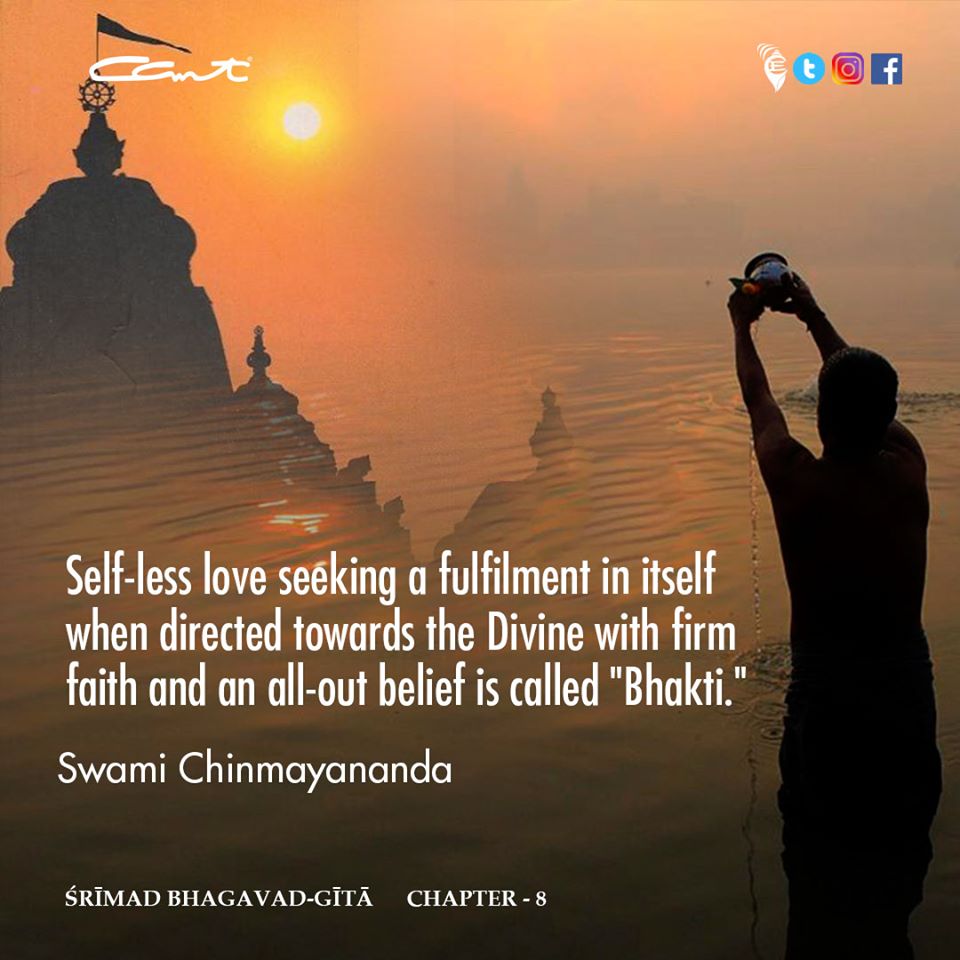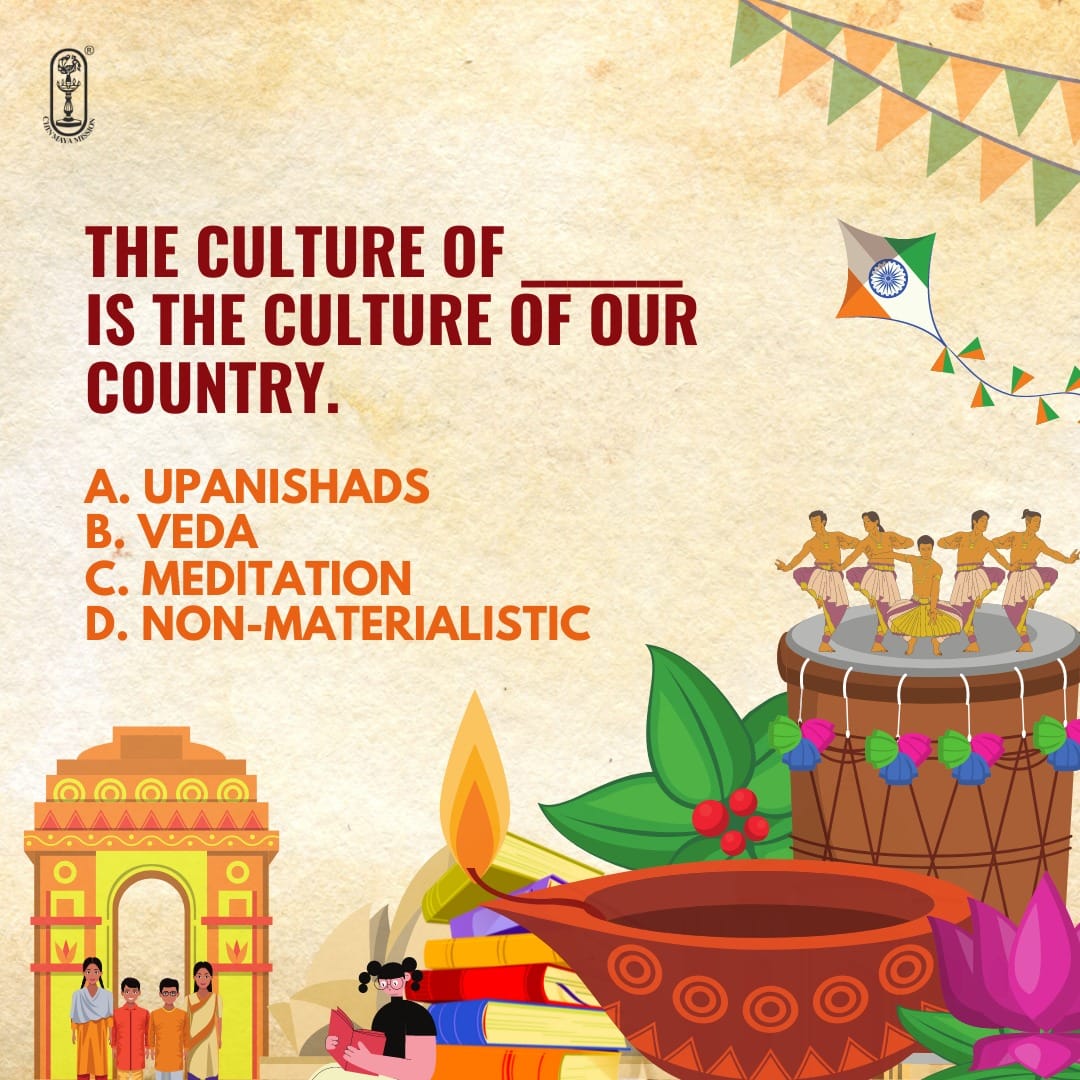Excerpts from Gurudev’s first global tour : 2. Published by ChinmayaMission.
========================================================================
========================================================================
08/12/2019
POST - 2.
========================================================================
These subjective scientists who had man as the theme of investigation, were called the Rishis and their recordings were called the Upanishads.
The Upanishads were not given out by one man. It was a science like any other sciences, built slowly by generations of thinkers.” Swamiji, after his one hour’s logical outpouring, concluded. “To rediscover this life in us is the path of Spirituality. To recognise it in us is to recognise it everywhere.
These Upanishads are in the form of conversations between the teacher and the taught. Upa – means near; ni -means below; shad – means sit. So it is that literature, or a knowledge gained through the teacher, in a spirit of humble enquiry. The disciple in his term, teaches his pupils; and so the great knowledge comes down through the centuries by word of mouth.”
On 23rd May, 1965, a lecture was arranged by the Hindu centre at St. Michael’s Hall. After Mr. L.K. Jeswani, Secretary of the Hindu center had given a welcoming speech, there were bhajans and devotional songs as part of their usual programme.
It was a huge gathering and there was pin drop silence when Swamiji rose to speak on the “Geeta Vision”.
“The backbone of a culture” Swamiji said “is its philosophy. A culture dies away when the philosophy is not strong enough to accommodate the new urges of a growing society. Philosophical truths, eternal though they are, should be interpreted to the ordinary man in the context of the changing times. This interpretation of philosophy evolving a new way of life is done by the rare few, great masters.
The Bhagavad Geeta is the conversation between Lord Krishna and Arjuna; though it took place 6000 years before Christ’s birth, it is immortal and eternal because it comprehends all situations man faces and all types of men in any situation. It is the bible of the Hindus. The great poet – philosopher, Vyasa has painted in the Mahabharata a cross section of humanity.”
Swamiji explained how the Upanishads and the picture of the Geeta are exact opposites, though they give the same truths. The Upanishadic Rishis were those who had retired into the Himalayas, to them the students came in humbleness, with a thirst to know the great reality. Whereas in the Geeta, Krishna is a mere charioteer and the arrogant, royal prince, Arjuna, refused to take Him seriously. This, the background and other details show that Hinduism is not for the retired recluse, but is to be lived every day in the market place, home and office.
To be continued ....
========================================================================
08/12/2019
POST - 2.
========================================================================
 |
| SWAMI CHINMAYANANDA |
These subjective scientists who had man as the theme of investigation, were called the Rishis and their recordings were called the Upanishads.
The Upanishads were not given out by one man. It was a science like any other sciences, built slowly by generations of thinkers.” Swamiji, after his one hour’s logical outpouring, concluded. “To rediscover this life in us is the path of Spirituality. To recognise it in us is to recognise it everywhere.
These Upanishads are in the form of conversations between the teacher and the taught. Upa – means near; ni -means below; shad – means sit. So it is that literature, or a knowledge gained through the teacher, in a spirit of humble enquiry. The disciple in his term, teaches his pupils; and so the great knowledge comes down through the centuries by word of mouth.”
On 23rd May, 1965, a lecture was arranged by the Hindu centre at St. Michael’s Hall. After Mr. L.K. Jeswani, Secretary of the Hindu center had given a welcoming speech, there were bhajans and devotional songs as part of their usual programme.
It was a huge gathering and there was pin drop silence when Swamiji rose to speak on the “Geeta Vision”.
“The backbone of a culture” Swamiji said “is its philosophy. A culture dies away when the philosophy is not strong enough to accommodate the new urges of a growing society. Philosophical truths, eternal though they are, should be interpreted to the ordinary man in the context of the changing times. This interpretation of philosophy evolving a new way of life is done by the rare few, great masters.
The Bhagavad Geeta is the conversation between Lord Krishna and Arjuna; though it took place 6000 years before Christ’s birth, it is immortal and eternal because it comprehends all situations man faces and all types of men in any situation. It is the bible of the Hindus. The great poet – philosopher, Vyasa has painted in the Mahabharata a cross section of humanity.”
Swamiji explained how the Upanishads and the picture of the Geeta are exact opposites, though they give the same truths. The Upanishadic Rishis were those who had retired into the Himalayas, to them the students came in humbleness, with a thirst to know the great reality. Whereas in the Geeta, Krishna is a mere charioteer and the arrogant, royal prince, Arjuna, refused to take Him seriously. This, the background and other details show that Hinduism is not for the retired recluse, but is to be lived every day in the market place, home and office.
To be continued ....
========================================================================





Comments